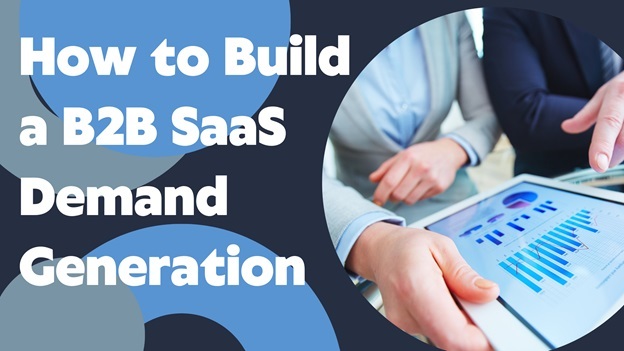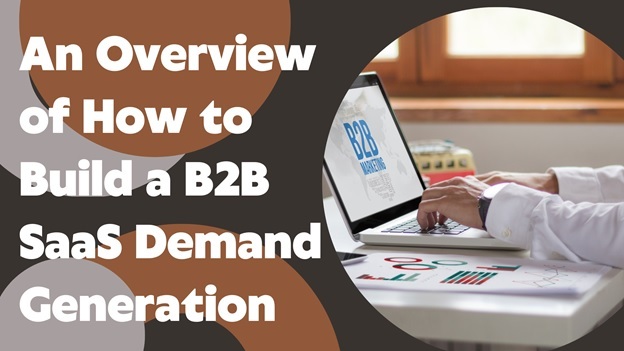Demand generation is a crucial aspect of marketing for Business to Business (B2B) Software as a Service (SaaS) companies. In today’s competitive business space, consumers have an array of options. This is why retaining market share can be challenging for B2B SaaS companies.
According to Ascend, 42% of B2B marketers report that being able to generate high-quality leads is their biggest challenge. With demand generation, a company can establish itself as a thought leader in its industry. It can drive potential customers to take action.
In this article, we will be looking at what demand generation is and how to build a B2B SaaS demand generation.
What Is Demand Generation?
Demand generation is the process of creating and nurturing interest in a product or service to generate sales leads. It involves a range of activities, including content marketing and social media marketing. Search engine optimization, email marketing, and advertising are also key.
The goal of demand generation is to build brand awareness and establish a company as a thought leader in its industry. This will ultimately drive potential customers to take action by requesting more information or making a purchase.
Demand generation for a B2B SaaS content marketing company typically involves a mix of inbound and outbound marketing strategies. Inbound marketing strategies focus on attracting potential customers to the company’s website. And this is done through compelling content and experiences.
Outbound marketing strategies, on the other hand, involve actively reaching out to potential customers through tactics such as advertising, cold calling, and email campaigns.
Building a B2B SAAS Demand Generation

There are several strategies that can help a B2B SaaS business generate leads and convert them into buying customers. Here are eight of them:
1. Define Your Target Audience
Defining your target audience is an important first step in building a B2B SaaS demand generation strategy. This is because it helps you focus your marketing efforts on specific types of businesses and individuals. Especially those who will benefit the most from your product.
By clearly identifying who your target audience is, you can properly tailor your messaging and content. And you can decide on the right marketing channels to reach and engage those prospects.
For example, if you know that your target audience is small- to medium-sized businesses in the retail industry, you can create content that addresses the common challenges and needs faced by these businesses.
And you can promote that content on channels that are popular among retail industry professionals. These could include LinkedIn or industry-specific trade publications. This will help you reach the right people and increase the chances of converting leads into customers.
Defining your target audience also helps you better understand the problems your product solves. This can inform your value proposition and message. By clearly communicating the benefits of your product and how it addresses specific pain points for your target audience, you can increase interest in and demand for your product.
2. Use Appointment Setting Services
Appointment-setting services consist of professionals who specialize in scheduling meetings or demonstrations with potential customers on behalf of a business. Appointment setting services use a variety of methods to identify potential leads and schedule appointments with decision-makers within those organizations.
The goal of an appointment-setting service is to schedule meetings or demonstrations with qualified prospects who are interested in learning more about your products or services. This can help your business generate demand and ultimately drive sales.
In addition to scheduling appointments, appointment-setting services may also provide support and follow-up services to help your business build relationships with prospects and close deals.
Appointment-setting services typically use a variety of methods to identify and contact potential leads. These include cold calling, email outreach, and social media marketing. They may also use data and analytics to target specific industries or markets and be able to identify the most effective methods for reaching potential customers.
3. Create Valuable Content
Creating valuable content is an important part of building a B2B SaaS demand generation strategy. It helps you attract and engage potential customers, establish thought leadership, and drive demand for your product.
Producing informative and useful content that addresses the challenges and needs of your target audience can attract the attention of potential customers. This can help you establish yourself as a trusted source of information in your industry.
Creating valuable content also helps with generating leads. You can include calls-to-action (CTAs) and forms in your content. This can help you collect contact information from prospects and convert them into leads.
4. Utilize Email Marketing
Email marketing is an effective way to reach potential customers as part of a B2B SaaS demand generation strategy. By sending targeted, automated email campaigns to leads, you can provide valuable information. It can keep your product top-of-mind as they move through the sales funnel.
You can send targeted emails to inactive leads. You can re-engage them and encourage them to consider your product again. Also, by segmenting your email lists and sending targeted, personalized messages, you can increase the chances of converting leads into customers.
Email marketing software can provide detailed analytics. This will allow you to track the effectiveness of your campaigns and make data-driven decisions to optimize your strategy.
5. Leverage Social Media
Social media is another effective way to reach and engage potential customers as part of a B2B SaaS demand generation strategy. You can create profiles on social media platforms and post regular updates. This helps to increase awareness of your brand and product.
By including calls-to-action (CTAs) in your social media posts and engaging with leads on social media, you can convert your audience into paying clients.
Social media also allows you to take advantage of influencer marketing. You can partner with influencers or industry thought leaders on social media. This helps you reach a larger audience and increase demand for your product.
6. Use Landing Pages and Forms
Landing pages and forms allow you to collect contact information from prospects and convert them into leads. A landing page typically stands apart from the main website. It is designed to encourage visitors to take a specific action. This could range from filling out a form to making a purchase.
By creating targeted landing pages with forms, you can collect information from prospects and qualify them as leads. For example, you could create a landing page for a webinar that includes a form for attendees to sign up. This allows you to collect contact information from interested prospects and follow up with them after the event.
Incorporating forms and landing pages into your demand-generation efforts can help you increase conversions. It can also help you build a stronger sales funnel. By collecting information from prospects, you can segment your leads. This will help you tailor your marketing efforts to better fit their needs and interests.
7. Use Lead Scoring and Grading
Lead scoring and grading are important tools for building a B2B SaaS demand generation strategy. They help you prioritize and qualify leads based on their level of interest and fit for your product.
Lead scoring allows you to assign a numerical value to leads based on their attributes, which could be a job title, industry, company size, etc. This allows you to prioritize leads and focus your marketing efforts on the most promising prospects.
Lead grading is similar to lead scoring. However, it involves assigning a categorical value to leads based on their level of fit and readiness to buy. For example, you might grade leads as “hot,” “warm,” or “cold” based on their level of engagement and likelihood to purchase.
Using lead scoring and grading can help you more effectively allocate your marketing resources. It also helps improve conversion rates. By focusing on the most promising leads, you can increase the chances of closing deals and drive more growth for your business.
8. Practice Lead Nurturing
Lead nurturing is the process of building relationships with leads and also involves guiding them through the sales funnel until they are ready to purchase. It is an important part of a B2B SaaS demand generation strategy because it helps you keep your product top-of-mind with leads.
There are several ways to nurture leads. One method is by using automated email campaigns. Automated emails can keep your product top-of-mind and move them closer to a purchase decision.
You can reach out to leads individually and provide personalized communication. This allows you to build stronger relationships and increase the chances of converting them into customers. Also, by producing valuable content that addresses the needs and challenges of your target audience, you can nurture leads and keep them engaged with your product.
Conclusion
Building a B2B SaaS demand generation strategy requires a combination of targeted marketing efforts and automation. By defining your target audience, developing a compelling value proposition, and creating valuable content, you can attract and engage potential customers.
Utilizing email marketing, social media, and paid advertising can help you reach a larger audience. It will also help drive qualified traffic to your website. Using landing pages, forms, lead scoring, and nurturing can help you convert leads into customers.
Lastly, measuring and optimizing your efforts can help you keep making your demand generation strategy better and help your business grow more.







